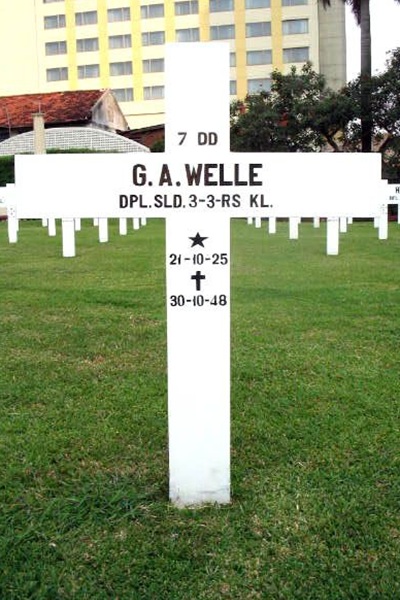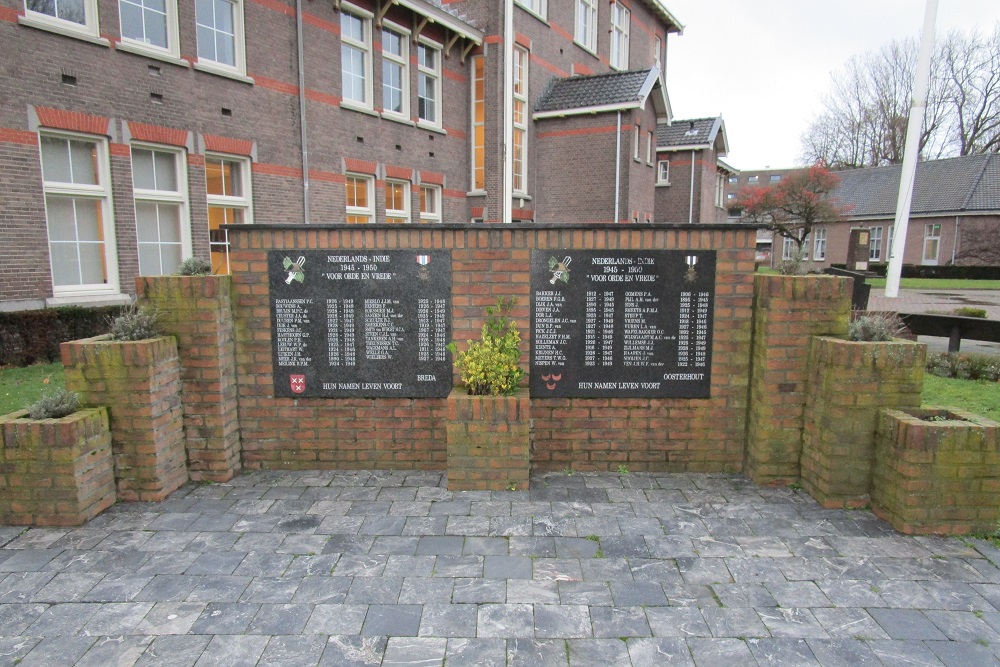Welle, Gerrit Antoon
- Date of birth:
- October 21st, 1925 (Princenhage/North Brabant, Netherlands)
- Date of death:
- October 30th, 1948 (Kampong Lengkongdjaja/Java, Dutch Indies)
- Buried on:
- Dutch War Cemetery Menteng Pulo
Plot: III. Grave: 94. - Nationality:
- Dutch
Biography
Dpl.Sld. 3-3-RS
Gerrit was born on 21 October 1925 in Princenhage and lived in Heelsum, Gelderland. Called up for military service, he enlisted in the Royal Netherlands Army in Nijmegen in 1946, where he was assigned as a soldier to the 3-3 Battalion Regiment Stoottroepen, which had been established there.
Due to the outbreak of violence in the Indonesian struggle for independence, Gerrit was sent to the Dutch East Indies as part of the 7 December Division to help restore peace and Dutch authority. In mid-October 1946, he departed for the East aboard the Volendam and landed a little less than a month later in Batavia, where he was stationed. During the first few months, Gerrit performed guard duty in and around the port of Tandjong Priok to prevent smuggling and theft. At the end of March 1947, he and his unit were transferred to the interior to secure the important Batavia-Bandung convoy route.
After lengthy, fruitless attempts between the Netherlands and the Republic to implement the Linggadjati Agreement, The Hague and Batavia gave army commander S.H. Spoor permission to launch the First Police Action on 21 July 1947. The aim is to regain Dutch control of economically vital areas on Java and Sumatra in order to force the Republic back to the negotiating table. For the Dutch soldiers, after months of waiting and restrained action along the demarcation lines, events suddenly come to a head.
Gerrit and his unit advance to secure the crucial railway tunnel at Lampegan, while Soekaboemi is captured and the surrounding area is cleared. He is then stationed in Tomo to secure the convoy route.
Towards the end of the Action, the battalion advanced from Tasikmalaya to Garut, which was reached after a difficult campaign hampered by destruction and traps. Tactically, the Action was a success; the resistance of the revolutionaries was quickly broken and all military objectives were achieved.
However, the Netherlands suffered serious damage to its image and, under increasing international pressure, the Operation was ended on 4 August. Another critical problem soon arose: a much larger area now had to be secured, which was almost impossible for the already heavily overburdened Dutch forces. Infiltrations and guerrilla attacks quickly increased again in the following months. Not only the revolutionary army, but also the Islamic militant groups Daroel Islam and Hizboellah were a constant source of unrest.
In April 1948, the battalion was assigned to the regency of Tjiamis, where further operations were carried out in the months that followed. Gerrit was killed on 30 October 1948 while on patrol in the kampong of Lengkongdjaja. He was 23 years old and was laid to rest in the Dutch military cemetery of Menteng Pulo in Jakarta.
Do you have more information about this person? Inform us!



